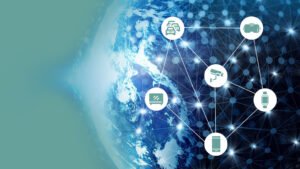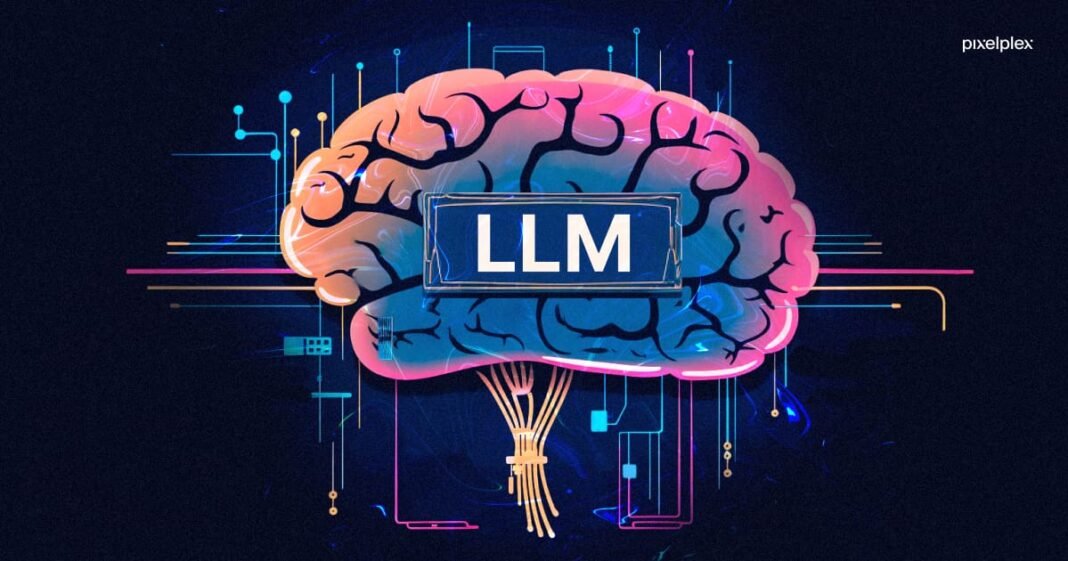In today’s rapidly evolving technological landscape, Intelligent Data Analysis in Edge Computing has emerged as a transformative approach that’s reshaping how organizations process and analyze data.
Rather than relying solely on centralized cloud systems, this paradigm brings computational power closer to data sources, consequently enabling faster response times and enhanced privacy.
As industries increasingly demand real-time insights, the marriage between sophisticated analysis techniques and edge infrastructure presents unprecedented opportunities for innovation across sectors.
The integration of large language models (LLMs) with edge computing frameworks represents a significant advancement in our ability to extract meaningful insights from data at the source
The Evolving Landscape of Edge Analytics
The traditional model of sending all data to centralized cloud servers for processing has increasingly shown limitations, especially for time-sensitive applications.
The explosive growth of Internet of Things (IoT) devices has created a data tsunami that strains network infrastructure. Consequently, edge computing has emerged as a logical solution, bringing computation closer to where data originates.
From Cloud to Edge: A Paradigm Shift
For years, cloud computing dominated data processing architectures, offering virtually unlimited computational resources and storage capabilities. However, this centralized approach naturally introduces latency as data travels to distant servers and back.
Meanwhile, privacy concerns grow as sensitive information traverses networks and resides in third-party infrastructure. Edge computing addresses these concerns by processing data at or near the source, minimizing both latency and exposure.
This paradigm shift encompasses several key advantages:
- Dramatically reduced response times, enabling real-time applications
- Decreased bandwidth consumption through local processing
- Enhanced data privacy through localized storage and analysis
- Improved operational resilience without constant cloud connectivity
- Reduced energy consumption from data transmission
Nevertheless, edge deployments come with their own set of constraints, primarily related to limited computational resources, power efficiency requirements, and reliability challenges in diverse operating environments.
The Rise of Language Models for Data Analysis
Simultaneously, large language models have revolutionized how we approach data analysis and natural language processing. These sophisticated models can:
- Extract meaningful patterns from unstructured data
- Generate human-quality text based on inputs
- Perform complex reasoning tasks across domains
- Translate between languages with remarkable accuracy
- Summarize lengthy documents while preserving key information
Models like GPT-4, BERT, and their derivatives have demonstrated impressive capabilities across domains, from healthcare diagnostics to financial analysis. However, these models typically require substantial computational resources, creating tension with the resource-constrained nature of edge devices.
Intelligent Data Analysis in Edge Computing: Challenges and Solutions
The implementation of advanced analytical capabilities at the edge presents several significant challenges. First, edge devices typically offer limited computational power compared to cloud infrastructure.
Second, energy efficiency becomes crucial as many edge devices operate on battery power or have thermal constraints. Finally, network reliability varies considerably across deployment environments.
Computational Constraints and Model Optimization
Traditional LLMs contain billions of parameters, demanding memory and processing power beyond most edge devices. Consequently, researchers have developed several approaches to address this fundamental mismatch:
Model Compression Techniques
Knowledge distillation represents one promising approach, where smaller “student” models learn to mimic the behavior of larger “teacher” models. This technique can reduce model size by orders of magnitude while preserving much of the original performance.
Pruning techniques selectively remove less important parameters from networks, creating sparse models that require less memory and computation.
Quantization offers another powerful optimization path by reducing the precision of numerical representations in the model. For instance, converting 32-bit floating-point values to 8-bit integers dramatically decreases memory requirements with minimal accuracy loss in many applications.
Edge-Specific Architectures
Beyond compression of existing models, researchers have developed architectures specifically designed for edge deployment. These frameworks prioritize inference speed and efficiency over maximum accuracy, making reasonable trade-offs based on application requirements.
Modular approaches have gained traction, where specialized components handle specific tasks rather than deploying monolithic models. This approach allows for more efficient resource allocation based on the specific analysis needs at any given moment.
Energy Efficiency Considerations
Power consumption represents a critical constraint for many edge deployments, particularly for battery-powered devices or deployments in remote locations. Therefore, optimizing energy efficiency has become a central research focus in this domain.
Hardware acceleration through specialized processors like Neural Processing Units (NPUs) and Field-Programmable Gate Arrays (FPGAs) can dramatically improve energy efficiency for machine learning workloads. Moreover, techniques like conditional computation activate only relevant parts of models based on input characteristics, further reducing energy requirements.
Distributed Learning Frameworks
Rather than squeezing complete models onto single devices, distributed approaches spread computational loads across multiple edge nodes. Federated learning enables model training across distributed devices without centralizing data, preserving privacy while leveraging collective computational power. Similarly, collaborative inference distributes model layers across devices, allowing larger models to operate within a connected edge ecosystem.
Applications Transforming Industries
The convergence of sophisticated data analysis capabilities with edge computing infrastructure is driving innovation across numerous sectors. These real-world applications demonstrate how Intelligent Data Analysis in Edge Computing moves beyond theoretical benefits to deliver tangible value.
Healthcare and Biomedical Monitoring
Edge-based intelligent analysis has profound implications for healthcare. Patient monitoring systems now analyze vital signs locally, identifying anomalies and potential emergencies without constant cloud connectivity. Wearable devices perform increasingly sophisticated health assessments, from gait analysis to early detection of neurological conditions.
Privacy considerations make edge processing particularly valuable in healthcare contexts. For example, medical imaging systems can apply pre-processing and initial diagnosis at the point of care, transmitting only relevant information rather than complete high-resolution scans.
Smart Cities and Urban Management
Urban environments generate massive data volumes from traffic sensors, surveillance systems, environmental monitors, and public infrastructure. Processing this information at the edge enables:
- Responsive traffic management systems that adapt to changing conditions
- Public safety applications with near-real-time alerting capabilities
- Environmental monitoring with immediate intervention capabilities
- Energy grid optimization through localized demand response
The reduced latency of edge processing proves especially valuable in emergency response scenarios, where milliseconds can make critical differences in outcomes.
Industrial IoT and Manufacturing
Manufacturing environments increasingly deploy sensor networks to monitor equipment health, product quality, and operational efficiency. Edge analysis of this data enables:
- Predictive maintenance that anticipates failures before they occur
- Quality control systems that identify defects in real-time
- Process optimization that adapts to changing conditions
- Worker safety systems that immediately detect hazardous situations
The combination of local processing with cloud connectivity creates hybrid architectures where immediate operational decisions happen at the edge while longer-term analytics and cross-facility learning occur in centralized systems.
Autonomous Vehicles and Transportation
Perhaps no application demonstrates the necessity of edge computing more clearly than autonomous transportation. Vehicles must make split-second decisions based on sensor data, with no tolerance for cloud communication latency.
Consequently, sophisticated edge processing systems analyze multiple data streams, including visual, LIDAR, and radar inputs, to navigate complex environments safely.
Vehicles also benefit from collaborative edge computing, where roadside infrastructure and nearby vehicles share information to improve overall system performance and safety. This vehicle-to-everything (V2X) communication relies on edge processing to manage the massive data flows involved.
Retail and Consumer Experiences
Brick-and-mortar retail locations increasingly deploy edge-based analysis systems to enhance customer experiences and operational efficiency. Computer vision systems analyze store traffic patterns, inventory levels, and customer behavior without transmitting sensitive footage to cloud systems.
Personalized shopping experiences can be delivered through local processing of customer data, maintaining privacy while providing relevant recommendations.
Future Directions and Emerging Trends
As the field continues to evolve, several promising research directions are emerging at the intersection of language models and edge computing.
Adaptive Models and Continual Learning
Future edge systems will likely feature adaptive capabilities that evolve based on local conditions and requirements. Rather than deploying static models, these systems will continue learning from new data, adapting to shifting patterns and emerging scenarios. Importantly, privacy-preserving techniques will enable this learning without compromising sensitive information.
Human-Machine Collaboration at the Edge
Rather than completely autonomous systems, many applications will feature collaborative intelligence where human expertise combines with machine capabilities. Edge-based systems will provide real-time suggestions, filtering, and preprocessing while incorporating human feedback and direction. This approach leverages the complementary strengths of human insight and machine processing.
Edge-Cloud Continuums and Hybrid Architectures
The binary distinction between edge and cloud will increasingly blur, replaced by flexible continuums where processing occurs at optimal points based on current requirements and conditions.

Dynamic orchestration systems will allocate tasks across this continuum, balancing latency, energy, privacy, and computational requirements in real-time.
Hardware Evolution for Edge Intelligence
Specialized hardware will continue evolving to support sophisticated analysis at the edge. Neuromorphic computing, which mimics biological neural structures, shows particular promise for energy-efficient machine learning applications. Additionally, emerging memory technologies may address current bottlenecks in model deployment and operation.
Expert Editorial Comment
The convergence of advanced analytical capabilities with edge computing infrastructure represents one of the most promising technological developments of the decade. As implementation challenges continue to be addressed through innovative compression techniques, specialized hardware, and distributed approaches, we’ll see increasingly sophisticated applications across industries.
Organizations looking to leverage Intelligent Data Analysis in Edge Computing should adopt strategic approaches that:
- Clearly identify use cases where edge analysis provides distinct advantages
- Balance performance requirements against device constraints
- Implement hybrid architectures that leverage both edge and cloud capabilities
- Address security and privacy considerations from design through deployment
- Invest in flexible frameworks that can evolve with rapidly advancing technology
The coming years will undoubtedly bring further breakthroughs in this dynamic field, as researchers continue addressing the fundamental tension between the computational demands of advanced analysis and the constraints of edge environments.
Organizations that thoughtfully navigate these challenges will unlock significant competitive advantages through faster insights, enhanced privacy, and more resilient operations.
By bringing intelligence to data sources rather than centralizing all processing, this paradigm fundamentally reshapes our approach to extracting value from the ever-expanding data universe. The intelligence truly lives at the edge, where information originates and actions occur.

